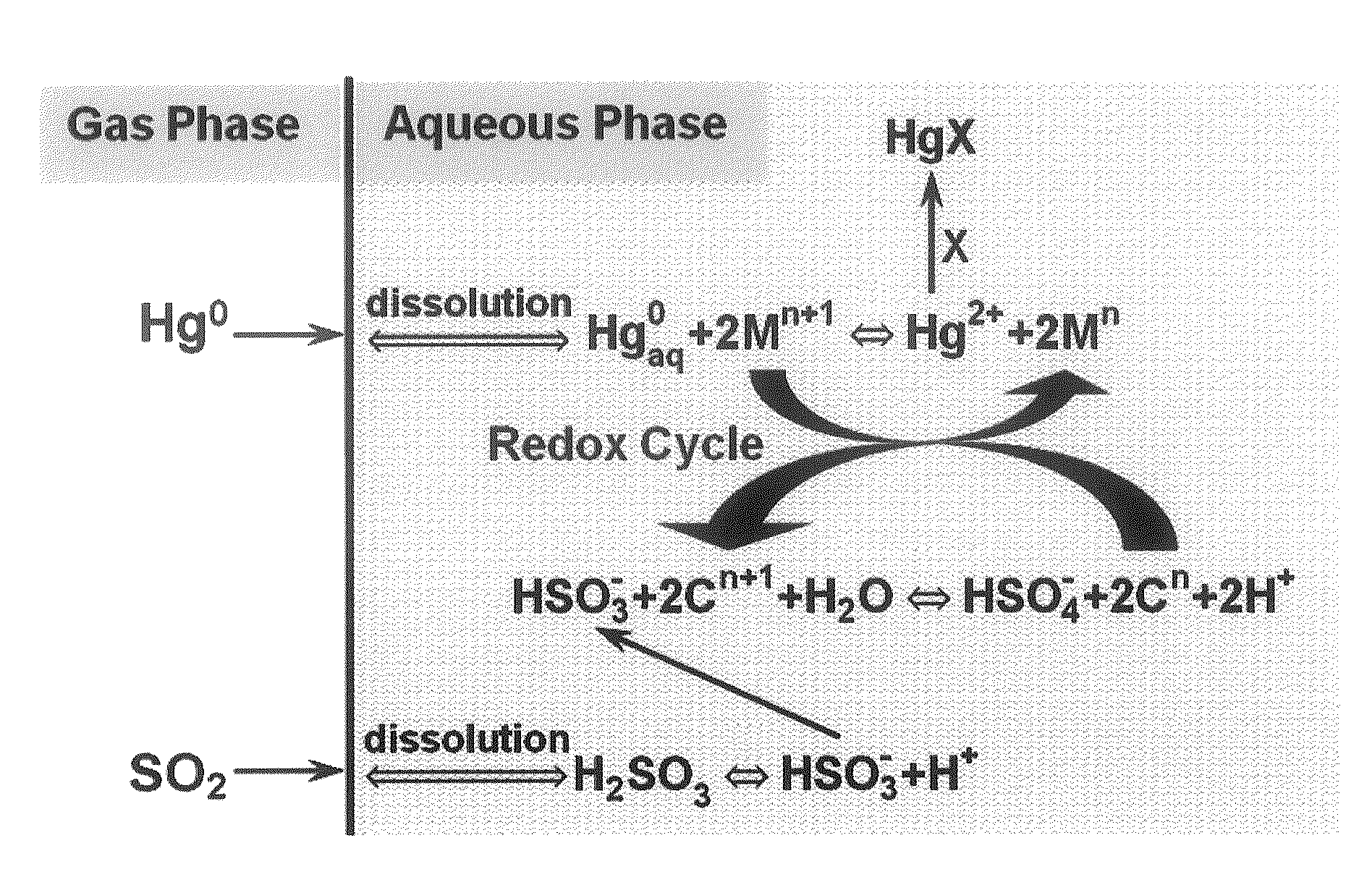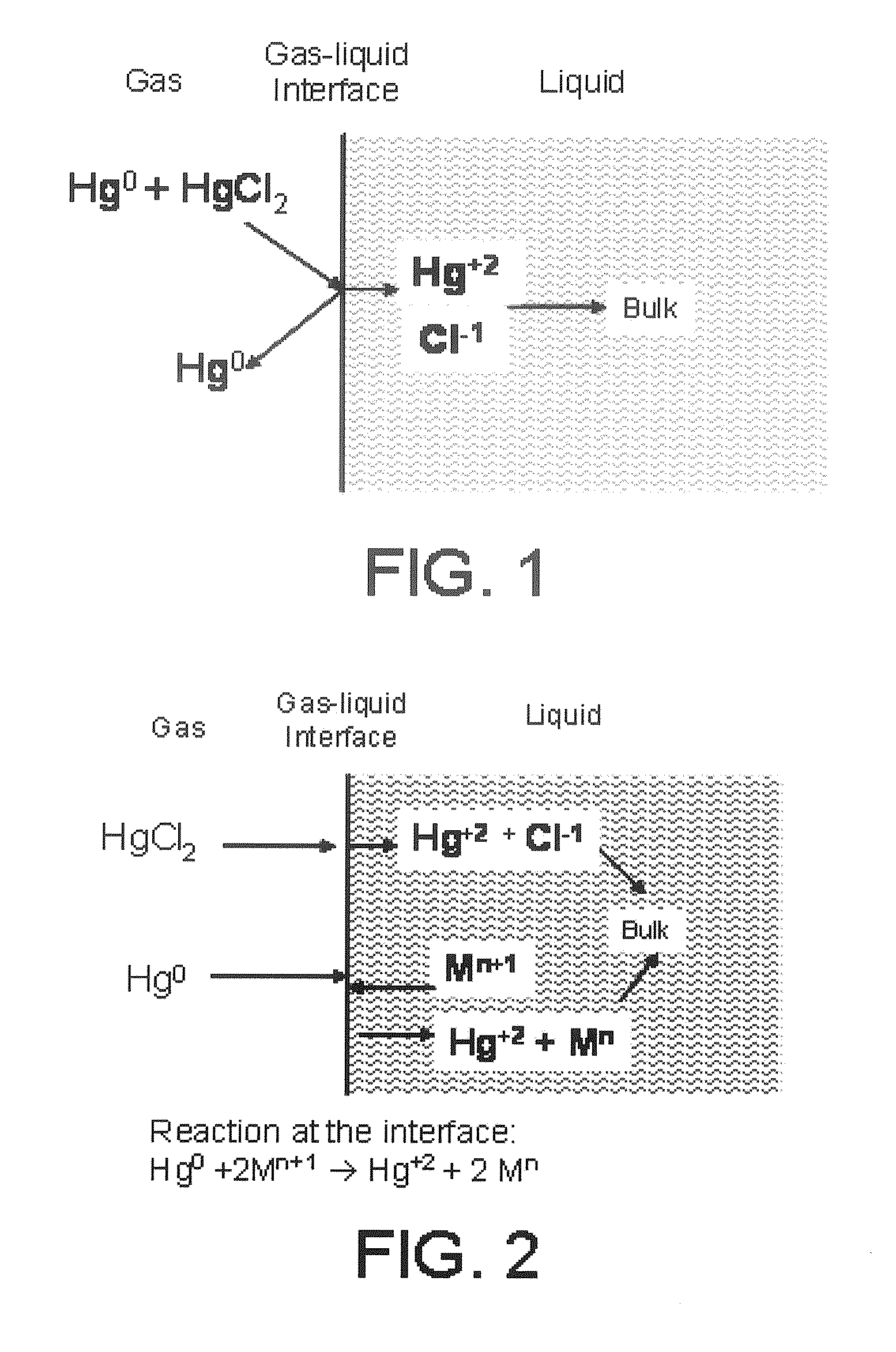Redox method for capture of total gaseous mercury by wet fgd
a redox method and gaseous mercury technology, applied in the field of flue gas treatment, can solve the problems of affecting the removal of elemental mercury by wet scrubbers, requiring significant economic investment, and inhibiting the disposal of combustion products such as fly ash
- Summary
- Abstract
- Description
- Claims
- Application Information
AI Technical Summary
Benefits of technology
Problems solved by technology
Method used
Image
Examples
Embodiment Construction
[0036]When referring to the drawings of the present invention, it shall be understood that like reference numerals are used to refer to the same or similar elements.
[0037]The present invention provides a method for capturing and removing elemental mercury from flue gas in wet FGD scrubbers by the reaction of a water-soluble mercury oxidant with elemental mercury at the gas-liquid interface of a wet FDG system, with or without the facilitation of a promoter and / or a complexing agent.
[0038]The solubility of oxidized mercury in scrubber slurries is much higher than that of elemental mercury. When the scrubber solution is saturated with elemental mercury, the solution will not retain any more elemental mercury from the gas. Hence, elemental mercury will remain in the gas phase and will be emitted to the atmosphere along with the flue gas. FIG. 1 illustrates the oxidized and elemental mercury capture mechanism in a wet FGD scrubbing system.
[0039]In order to increase elemental mercury rem...
PUM
| Property | Measurement | Unit |
|---|---|---|
| reduction potential | aaaaa | aaaaa |
| reduction potential | aaaaa | aaaaa |
| reduction potential | aaaaa | aaaaa |
Abstract
Description
Claims
Application Information
 Login to View More
Login to View More - R&D
- Intellectual Property
- Life Sciences
- Materials
- Tech Scout
- Unparalleled Data Quality
- Higher Quality Content
- 60% Fewer Hallucinations
Browse by: Latest US Patents, China's latest patents, Technical Efficacy Thesaurus, Application Domain, Technology Topic, Popular Technical Reports.
© 2025 PatSnap. All rights reserved.Legal|Privacy policy|Modern Slavery Act Transparency Statement|Sitemap|About US| Contact US: help@patsnap.com



